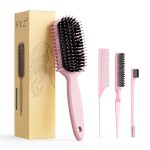
Curl Defining Brush, Curly Hair Brush, Review curly hairstyles Buying Guide – Oemiu
The Ultimate Guide to Curl Defining Brushes: Achieve Your Dream Curls
For those blessed (or sometimes, cursed!) with curly hair, the quest for perfect, defined curls can feel like an endless journey. From battling frizz to searching for the right products, managing curly hair requires dedication and, more importantly, the right tools. Among the most crucial tools in any curly-haired individual’s arsenal is the curl defining brush. But with a seemingly endless array of options available, choosing the right one can feel overwhelming. This comprehensive guide will demystify the world of curl defining brushes, helping you understand the different types, how they work, and how to select the perfect brush for your unique curl type and desired hairstyle. We’ll explore everything from detangling to styling, ensuring you have the knowledge to achieve those bouncy, beautiful curls you’ve always dreamed of. Whether you’re rocking tight coils, loose waves, or anything in between, finding the right brush is the key to unlocking your hair’s full potential.
Understanding Curl Types and Their Needs
Before diving into the specifics of curl defining brushes, it’s crucial to understand your own curl type. Curly hair isn’t a monolith; it spans a spectrum from loose waves to tight coils, each with its own unique characteristics and needs. The Andre Walker Hair Typing System, while not universally loved, provides a useful framework. Type 2 hair refers to wavy hair, ranging from slightly bent (2A) to defined S-shaped waves (2C). Type 3 is curly hair, which can range from loose, bouncy curls (3A) to tighter, springier curls (3C). Finally, Type 4 is coily hair, characterized by very tight, small curls that can be Z-shaped (4A) or tightly coiled (4C). Knowing your curl type allows you to choose a brush that will effectively define your curls without causing damage or frizz. For example, someone with fine, 3A curls might benefit from a brush with flexible bristles that gently detangle and define, while someone with thick, 4C hair might need a sturdier brush with widely spaced bristles to penetrate the hair and clump the curls. Beyond the curl pattern, consider your hair density (fine, medium, or thick) and porosity (how well your hair absorbs moisture). High porosity hair tends to dry out quickly and can benefit from brushes that help distribute products evenly, while low porosity hair may require brushes that encourage product penetration.
Different curl types respond differently to various styling techniques. A popular look like **curly shag hairstyles** might work well for looser curl patterns (2B-3A) as the layers enhance the natural wave and curl. However, for tighter curls (3C-4C), a different approach might be needed to achieve a similar voluminous effect without compromising definition. Similarly, a stylish **curly bob hairstyle** can be effortlessly achieved on looser curls, requiring minimal effort with a curl defining brush to maintain its shape. On tighter curls, a textured curly bob with defined coils and ample volume can be achieved with precision cutting and appropriate brush usage. Finally, a simple **curly ponytail hairstyle** can be enhanced with the strategic use of a curl defining brush. For looser curls, brushing through the hair and creating a smooth ponytail can create a polished look. For tighter curls, using a curl defining brush to define the curls before gathering the hair into a ponytail can create a voluminous and textured effect.
Furthermore, understanding the unique challenges associated with each curl type is crucial for selecting the right curl defining brush. For example, wavy hair is prone to frizz and can easily lose its definition. Therefore, a brush that gently encourages clumping and minimizes frizz is ideal. Curly hair, on the other hand, often struggles with dryness and can be prone to breakage. A brush that distributes natural oils from the scalp down the hair shaft can help to combat dryness and improve overall hair health. Coily hair is often the most fragile and prone to breakage, requiring a brush that is gentle and doesn’t cause excessive pulling or tugging. In addition to curl type, lifestyle and personal preferences play a significant role in choosing a curl defining brush. For example, someone who prefers a quick and easy styling routine might opt for a brush that can be used in the shower to detangle and define curls in one step. On the other hand, someone who enjoys experimenting with different hairstyles might prefer a variety of brushes to achieve different looks.
Exploring the World of Curl Defining Brushes
The market for curl defining brushes is vast and diverse, with various shapes, sizes, and materials designed to cater to specific curl types and styling goals. Understanding the different types of brushes available is essential for making an informed decision. One of the most popular types of curl defining brush is the detangling brush. These brushes typically feature flexible bristles and a wide base, making them ideal for gently detangling knots and reducing breakage. They are particularly useful for individuals with thick or coily hair that is prone to tangling. Denman brushes are also very popular. The original Denman brush has rows of evenly spaced pins, which allow you to section and style your curls with precision. They are especially useful for creating defined curl clumps and are popular among individuals with wavy or curly hair. Paddle brushes, while not traditionally used for curl definition, can be effective for smoothing and shaping curls, especially when used with a diffuser. They are often used to create a more polished and refined look.
| Brush Type | Ideal Curl Type | Benefits | Drawbacks |
|---|---|---|---|
| Detangling Brush | Thick, coily hair | Gently detangles, reduces breakage | May not provide strong curl definition |
| Denman Brush | Wavy, curly hair | Creates defined curl clumps, smooths frizz | Can be difficult to clean |
| Paddle Brush | All curl types | Smooths and shapes curls, creates a polished look | May not enhance natural curl pattern |
| Round Brush | Wavy, curly hair | Adds volume and bounce, creates defined curls | Can be difficult to use on very tight curls |
| Vent Brush | All curl types | Dries hair quickly, adds volume at the roots | May create frizz if not used carefully |
Beyond the type of brush, the materials used in its construction also play a significant role in its performance. Bristles can be made from a variety of materials, including boar bristles, nylon, and plastic. Boar bristles are known for their ability to distribute natural oils from the scalp down the hair shaft, promoting shine and reducing frizz. However, they can be expensive and may not be suitable for individuals with vegan or vegetarian lifestyles. Nylon bristles are a more affordable and readily available alternative. They are durable and easy to clean, making them a popular choice for many curl defining brushes. Plastic bristles are often used in detangling brushes due to their flexibility and ability to glide through knots without causing breakage. In addition to the bristles, the handle of the brush should also be considered. Ergonomic handles are designed to fit comfortably in the hand, reducing fatigue and making styling easier. Look for handles that are made from non-slip materials to ensure a secure grip, even when your hands are wet. Finally, consider the overall construction of the brush. Look for brushes that are well-made and durable, with bristles that are securely attached to the base. A well-constructed brush will last longer and provide more consistent results.
When exploring curl defining brushes, remember that some are more suited to specific hair thicknesses and densities. If you want to achieve **defined natural curls long hair** can often be more challenging to manage because of the weight, so sturdier brushes with wider-spaced bristles are preferable. For finer hair, a brush with softer, more closely spaced bristles will provide more gentle definition without causing damage. Selecting the right brush is key to maintaining healthy, happy curls and achieving the hairstyles you desire.
The Art of Using a Curl Defining Brush: Techniques and Tips
Owning the perfect curl defining brush is only half the battle; mastering the proper techniques for using it is essential for achieving optimal results. The key is to use a light hand and avoid excessive pulling or tugging, which can lead to breakage and frizz. Begin by detangling your hair with a wide-tooth comb or detangling brush, working from the ends up to the roots. This will remove any knots or tangles and prepare your hair for styling. Next, apply your favorite curl defining product, such as a cream, gel, or mousse. Distribute the product evenly throughout your hair, focusing on the areas where you want to enhance curl definition. With your hair prepped and product applied, it’s time to start using your curl defining brush. Section your hair into manageable portions and begin brushing from the roots to the ends, using a slow and deliberate motion. As you brush, pay attention to how your curls are forming. Experiment with different techniques to see what works best for your hair. For example, you can try brushing upwards and outwards to encourage volume, or twisting the brush as you move down the hair shaft to create more defined curls. One popular technique is the “brush styling” method, which involves using the brush to clump your curls together and create defined sections. To do this, hold the brush horizontally and gently glide it through your hair, allowing the bristles to gather the curls together. Once you have created a defined section, release the brush and allow the curls to spring back into place. Repeat this process throughout your hair until all of your curls are defined.
Another important tip is to avoid over-brushing your hair. Over-brushing can disrupt the natural curl pattern and lead to frizz. Instead, focus on defining the curls in each section and then leave them alone to air dry or diffuse. Diffusing is a great way to speed up the drying process and enhance curl definition. Attach a diffuser to your hair dryer and hold it near your scalp, allowing the air to gently circulate around your curls. Avoid touching your hair while it’s drying, as this can cause frizz. Once your hair is completely dry, you can gently fluff your roots to add volume and separate the curls if desired. Remember that practice makes perfect. It may take some experimentation to find the techniques that work best for your hair. Don’t be afraid to try different brushes, products, and styling methods until you find a routine that gives you the results you’re looking for. And most importantly, be patient and kind to your hair. Curly hair is unique and beautiful, and with the right tools and techniques, you can achieve the defined, bouncy curls of your dreams.
Consider the angle at which you hold the brush. A more angled approach can emphasize volume at the roots, especially for styles like **curly hair with bangs hairstyles**, where lift at the crown can be incredibly flattering. Also, understanding the tension you apply while brushing can make a significant difference. Less tension can help create looser, more natural curls, while more tension can create tighter, more defined curls. Be mindful of how your hair responds to these variations and adjust your technique accordingly. For example, if you’re aiming for a **messy curly hairstyles** look, you’ll want to use a lighter touch and avoid over-defining the curls.
Maintaining Your Curl Defining Brush: Cleaning and Care
Just like any other tool in your hair care arsenal, your curl defining brush requires regular maintenance to keep it in good condition and ensure optimal performance. Over time, brushes can accumulate product buildup, dead hair, and dust, which can not only affect their ability to define curls but also harbor bacteria that can be harmful to your scalp. Cleaning your curl defining brush is a simple but essential task that should be done at least once a week, or more often if you use a lot of styling products. The first step in cleaning your brush is to remove any loose hair. You can use your fingers, a comb, or a specialized brush cleaning tool to remove the hair from the bristles. Be thorough in removing all of the hair, as this will make it easier to clean the brush. Next, fill a bowl with warm water and add a few drops of a mild shampoo or dish soap. Submerge the brush in the soapy water and swirl it around to loosen any product buildup. You can also use your fingers or a soft brush to gently scrub the bristles. Pay particular attention to the base of the bristles, where product tends to accumulate. Once you have thoroughly cleaned the brush, rinse it under warm running water until all of the soap is gone. Be sure to rinse the brush from all angles to ensure that no soap residue remains. After rinsing, gently squeeze out any excess water from the bristles. You can also use a clean towel to blot the brush dry. Finally, allow the brush to air dry completely before using it again. Avoid using a hair dryer to dry the brush, as this can damage the bristles and shorten the lifespan of the brush.
In addition to regular cleaning, there are a few other things you can do to maintain your curl defining brush. Avoid storing your brush in a humid environment, such as the bathroom, as this can encourage the growth of mold and mildew. Instead, store your brush in a dry, well-ventilated area. If you notice that the bristles on your brush are starting to fray or break, it’s time to replace the brush. Using a brush with damaged bristles can cause breakage and damage to your hair. Finally, consider investing in a specialized brush cleaning tool. These tools are designed to make cleaning your brush easier and more effective. They typically feature a small brush or comb that can be used to remove hair and product buildup from the bristles. By following these simple maintenance tips, you can keep your curl defining brush in good condition for years to come.
Proper care ensures your brush remains effective, especially when striving for complex looks such as **braided curly hairstyles**. Product build-up can make the brush less effective at distributing products evenly and can even transfer old product back into your hair. Clean brushes allow for a more even distribution of product and result in cleaner, more defined curls.
Choosing the Right Brush: A Buying Guide
With so many curl defining brushes on the market, choosing the right one can feel like a daunting task. To help you narrow down your options, here’s a comprehensive buying guide that takes into account various factors: Curl type, bristle material, brush shape, handle ergonomics, and budget. Begin by considering your curl type and the specific needs of your hair. If you have fine, wavy hair, look for a brush with soft, flexible bristles that won’t cause breakage. If you have thick, coily hair, look for a brush with sturdy, widely spaced bristles that can penetrate your hair and clump the curls. Next, consider the bristle material. Boar bristles are great for distributing natural oils, while nylon and plastic bristles are more affordable and durable. Choose a bristle material that suits your budget and preferences. The shape of the brush is also important. Detangling brushes are great for removing knots, while Denman brushes are ideal for creating defined curl clumps. Paddle brushes can be used to smooth and shape curls, while round brushes can add volume and bounce. Consider the hairstyles you want to achieve and choose a brush shape that will help you create those looks. Ergonomics are crucial for comfortable styling. Look for a brush with an ergonomic handle that fits comfortably in your hand and provides a secure grip. A comfortable handle will make styling easier and less tiring. Finally, set a budget and stick to it. Curl defining brushes range in price from affordable to expensive. While it’s tempting to splurge on the most expensive brush, remember that price doesn’t always equal quality. There are many excellent curl defining brushes available at reasonable prices.
To further simplify your decision-making process, consider these additional factors: Brand reputation and customer reviews. Look for brands that are known for producing high-quality hair care tools. Read customer reviews to get an idea of how other users have experienced the brush. Warranty and return policy. Choose a brush that comes with a warranty or return policy. This will protect you in case the brush is defective or doesn’t meet your expectations. Versatility. Consider whether the brush can be used for multiple purposes, such as detangling, styling, and smoothing. A versatile brush can save you money and space in your hair care collection. Portability. If you travel frequently, look for a brush that is compact and easy to pack. A travel-sized brush can be a lifesaver when you’re on the go. Consider whether you prefer a brush with a handle or a brush without a handle. Brushes with handles are easier to grip and control, while brushes without handles can be more compact and versatile.
| Feature | Considerations |
|---|---|
| Curl Type | Fine, wavy, curly, coily |
| Bristle Material | Boar, nylon, plastic |
| Brush Shape | Detangling, Denman, paddle, round |
| Handle Ergonomics | Comfort, grip, material |
| Budget | Affordable to expensive |
| Brand Reputation | Established brands vs. newcomers |
| Customer Reviews | Real-world experiences |
By considering these factors and doing your research, you can confidently choose the perfect curl defining brush for your hair. Remember that the best brush is one that is comfortable to use, effective at defining your curls, and fits within your budget. Don’t be afraid to experiment with different brushes until you find the one that works best for you. Your perfect curls are waiting!
Frequently Asked Questions (FAQ)
What is a curl defining brush, and how does it differ from a regular brush?
A curl defining brush is specifically designed to enhance and define natural curl patterns, unlike regular brushes, which are typically used for detangling or smoothing hair. These brushes often feature unique bristle configurations, such as rows of evenly spaced pins or flexible bristles, that help to clump curls together and create defined sections. The goal is to minimize frizz, promote curl definition, and encourage even product distribution. Regular brushes, on the other hand, may disrupt the natural curl pattern and lead to frizz. Curl defining brushes are typically used on wet or damp hair, while regular brushes can be used on dry hair. The choice between a curl defining brush and a regular brush depends on your desired hairstyle and the specific needs of your hair. If you want to enhance your natural curls, a curl defining brush is the way to go. If you simply want to detangle or smooth your hair, a regular brush may be sufficient.
Can I use a curl defining brush on all hair types?
While curl defining brushes are primarily designed for curly hair, they can be used on other hair types with some adjustments. Wavy hair can benefit from the definition and frizz control offered by these brushes, while straight hair may see some added texture and volume. However, it’s essential to choose the right type of curl defining brush for your specific hair type. For example, someone with fine, straight hair should opt for a brush with soft, flexible bristles that won’t cause breakage, while someone with thick, wavy hair may need a brush with sturdier bristles to penetrate the hair. It’s also important to use the brush correctly. Avoid over-brushing, which can disrupt the natural curl pattern and lead to frizz. Instead, focus on defining the curls in each section and then leave them alone to air dry or diffuse. With the right brush and technique, individuals with various hair types can potentially benefit from using a curl defining brush.
How often should I clean my curl defining brush?
Cleaning your curl defining brush is crucial for maintaining its effectiveness and preventing the buildup of product, dead hair, and bacteria. Ideally, you should clean your brush at least once a week, or more often if you use a lot of styling products. To clean your brush, start by removing any loose hair. Then, fill a bowl with warm water and add a few drops of a mild shampoo or dish soap. Submerge the brush in the soapy water and swirl it around to loosen any product buildup. You can also use your fingers or a soft brush to gently scrub the bristles. Rinse the brush under warm running water until all of the soap is gone. Gently squeeze out any excess water and allow the brush to air dry completely before using it again. Regular cleaning will keep your brush in good condition and prevent it from becoming a breeding ground for bacteria.
What are the best products to use with a curl defining brush?
The best products to use with a curl defining brush depend on your curl type and desired hairstyle. Some popular options include curl creams, gels, mousses, and leave-in conditioners. Curl creams are great for adding moisture and definition to curls, while gels provide hold and control. Mousses can add volume and bounce, and leave-in conditioners can help to detangle and hydrate curls. When choosing products, look for formulas that are specifically designed for curly hair. These products often contain ingredients that help to moisturize, define, and protect curls from frizz. It’s also important to avoid products that contain harsh chemicals, such as sulfates and parabens, which can strip the hair of its natural oils and lead to dryness and breakage. Experiment with different products until you find a combination that works best for your hair.
How do I know if my curl defining brush is causing damage to my hair?
Several signs indicate that your curl defining brush might be causing damage to your hair. Excessive breakage, increased frizz, and a change in curl pattern are all red flags. If you notice that your hair is becoming more brittle or dry after using the brush, it could be a sign that the bristles are too harsh or that you’re using too much force. Pay attention to how your hair feels and looks after each use. If you suspect that your brush is causing damage, try switching to a softer brush with more flexible bristles. You can also try using a lighter touch when brushing and avoid over-brushing your hair. If the problem persists, consult with a hairstylist who specializes in curly hair. They can assess your hair’s condition and recommend a brush that is better suited for your hair type and needs.
Are there different techniques for using a curl defining brush on different curl types?
Yes, different techniques are generally recommended for using a curl defining brush on different curl types. For looser waves (2A-2C), focusing on gentle detangling and smoothing is key. Use the brush to encourage clumping and minimize frizz, working in large sections. For classic curls (3A-3C), the brush can be used to define individual curls and create more structured styles. Experiment with different angles and tensions to see what works best for your hair. For tighter coils (4A-4C), sectioning the hair is essential. Use the brush to define each section, working from the roots to the ends. Be gentle and patient, as tight coils are more prone to breakage. It’s also important to use a hydrating product to lubricate the hair and prevent damage. Ultimately, the best technique is one that is gentle, effective, and tailored to your specific curl type and hair needs.
How do I choose between a Denman brush and a regular curl defining brush?
Choosing between a Denman brush and a regular curl defining brush depends on your desired level of curl definition and the specific needs of your hair. A Denman brush is known for its ability to create defined curl clumps, due to its evenly spaced rows of pins. It’s excellent for individuals who want to achieve a more structured and polished look. It also works well for smoothing frizz and distributing product evenly. However, some find it can stretch out looser curls if not used carefully. A regular curl defining brush, on the other hand, may offer more flexibility in terms of styling. These brushes often feature flexible bristles that gently detangle and define curls without creating overly structured clumps. They are a good option for individuals who prefer a more natural, less defined look. Consider your curl type, desired level of definition, and personal preferences when making your decision. If you want defined curl clumps and a polished look, a Denman brush is a good choice. If you prefer a more natural look and need a brush that can gently detangle and define, a regular curl defining brush may be a better option.
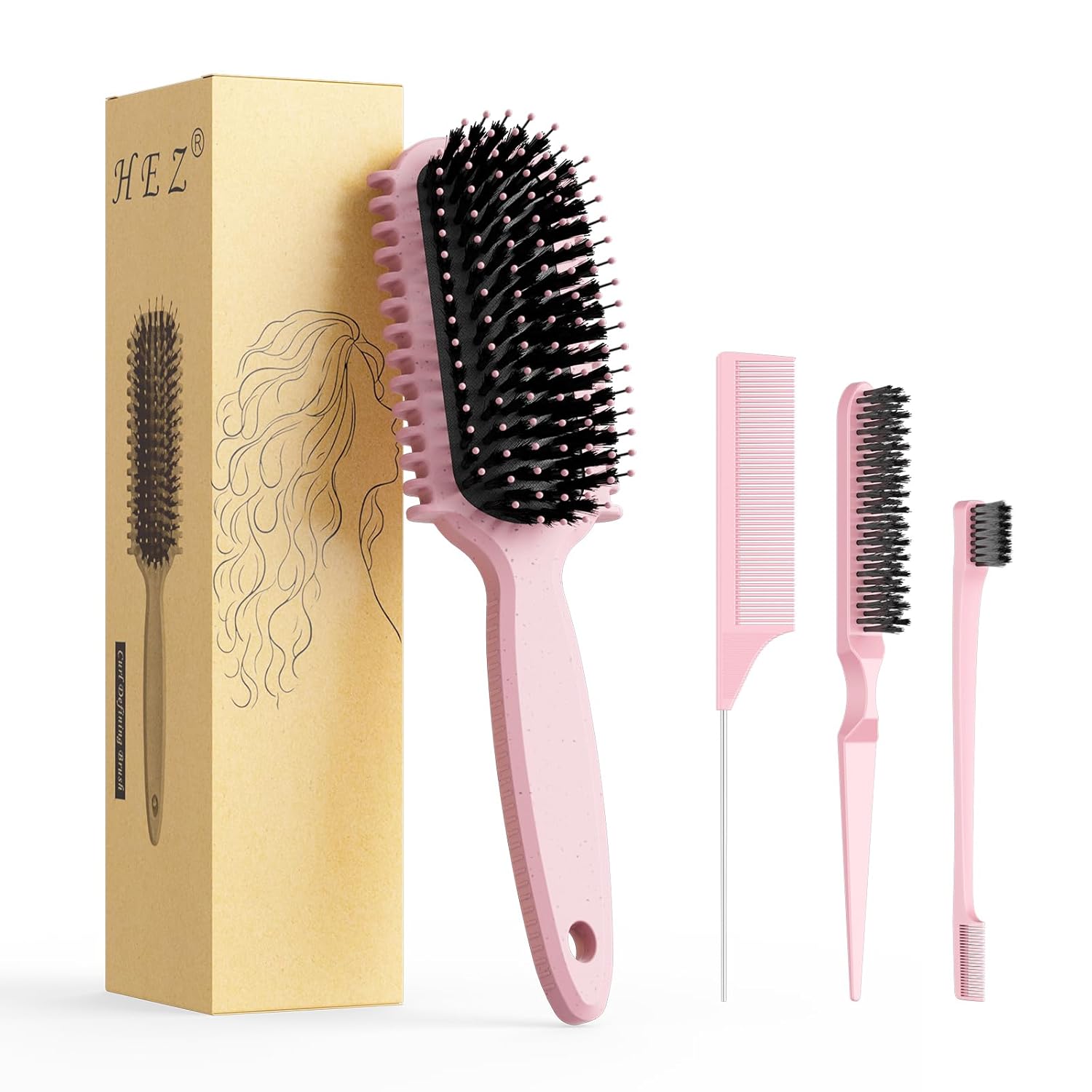
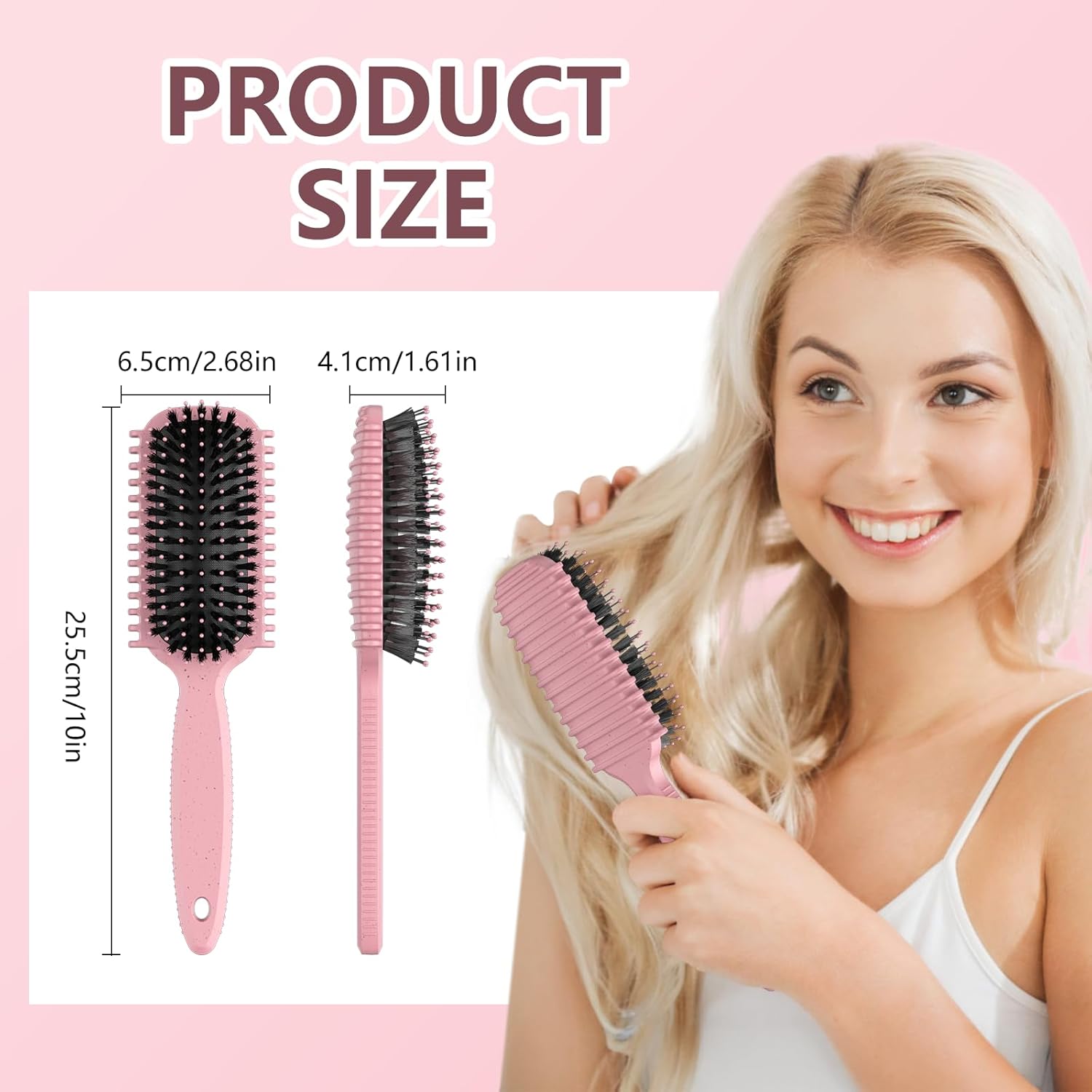
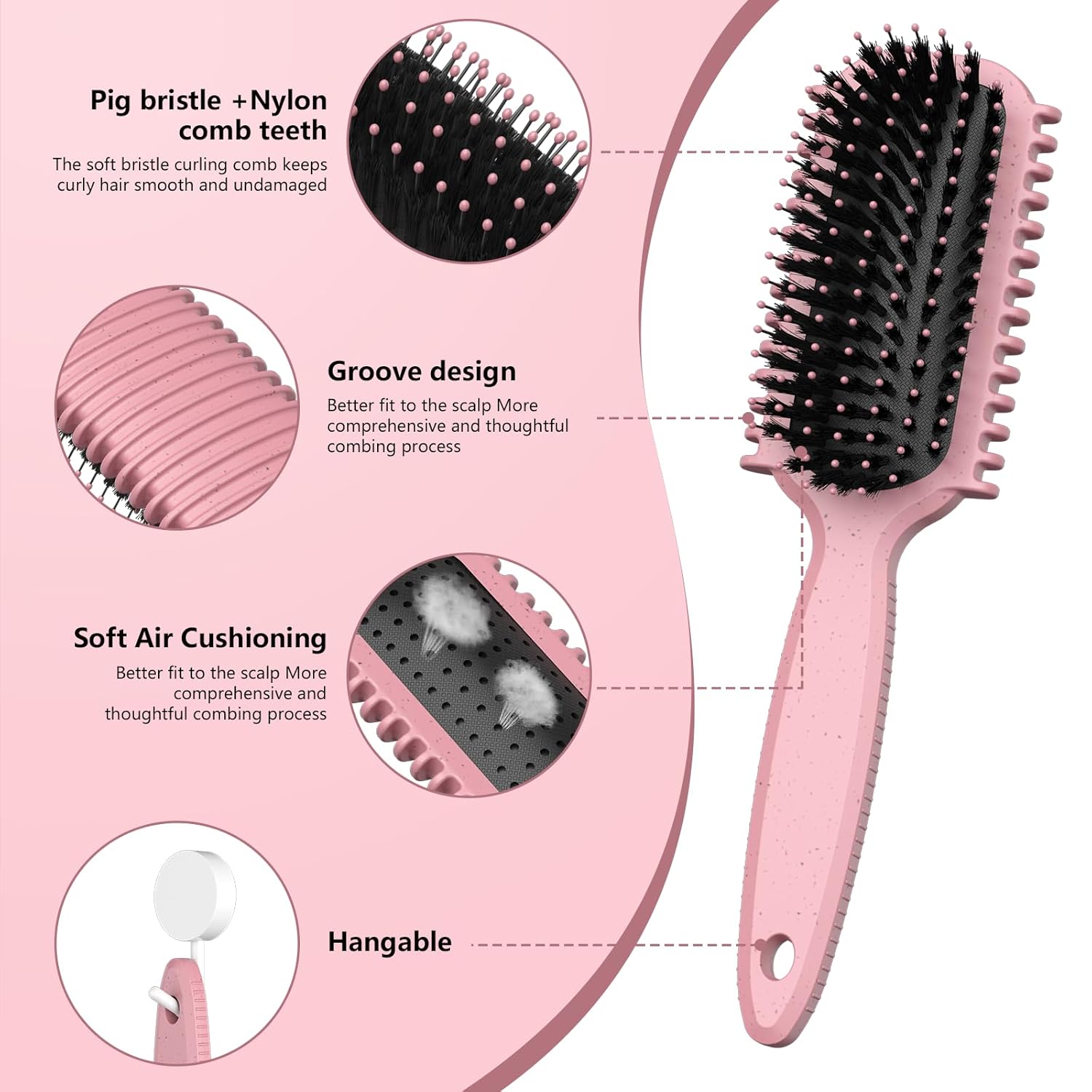
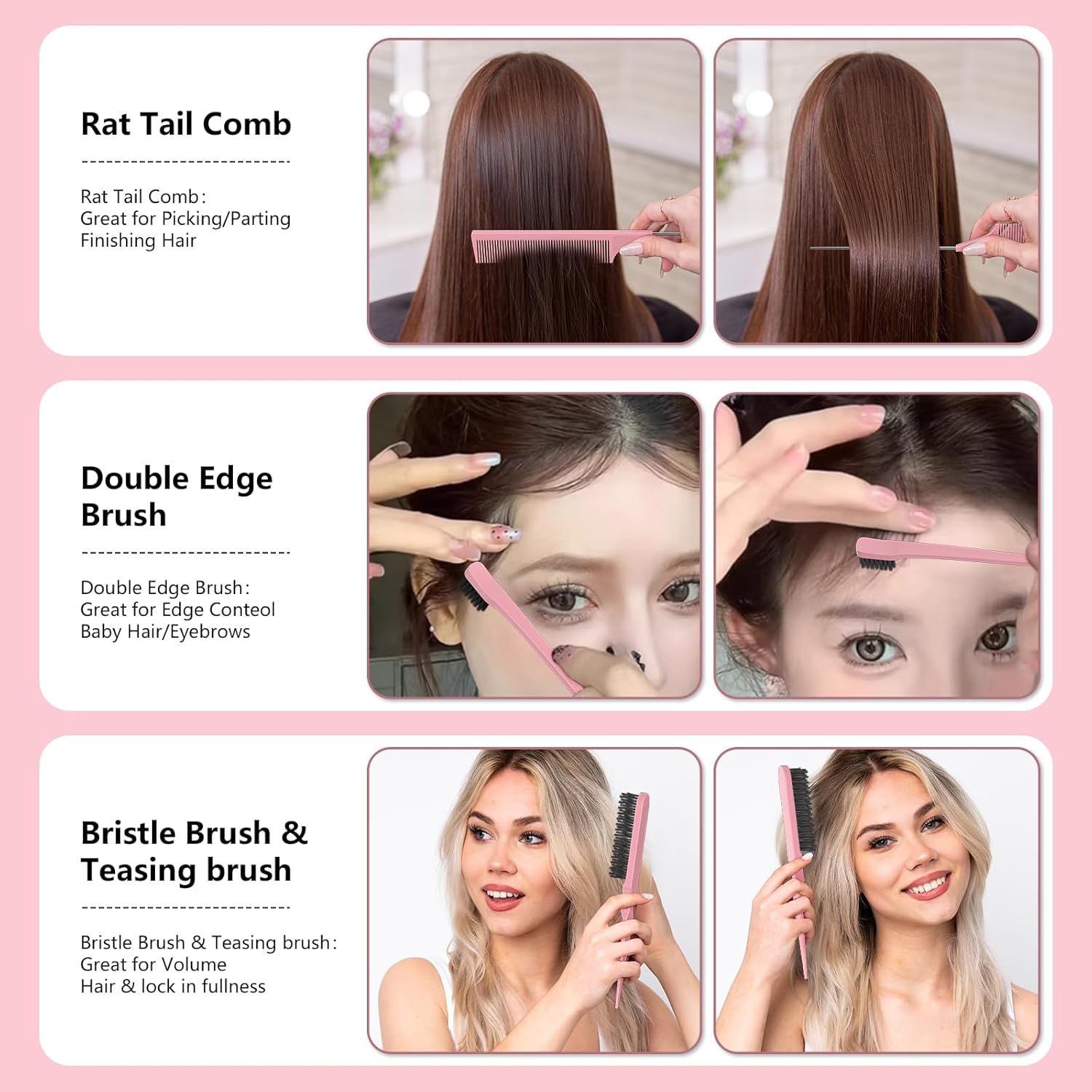


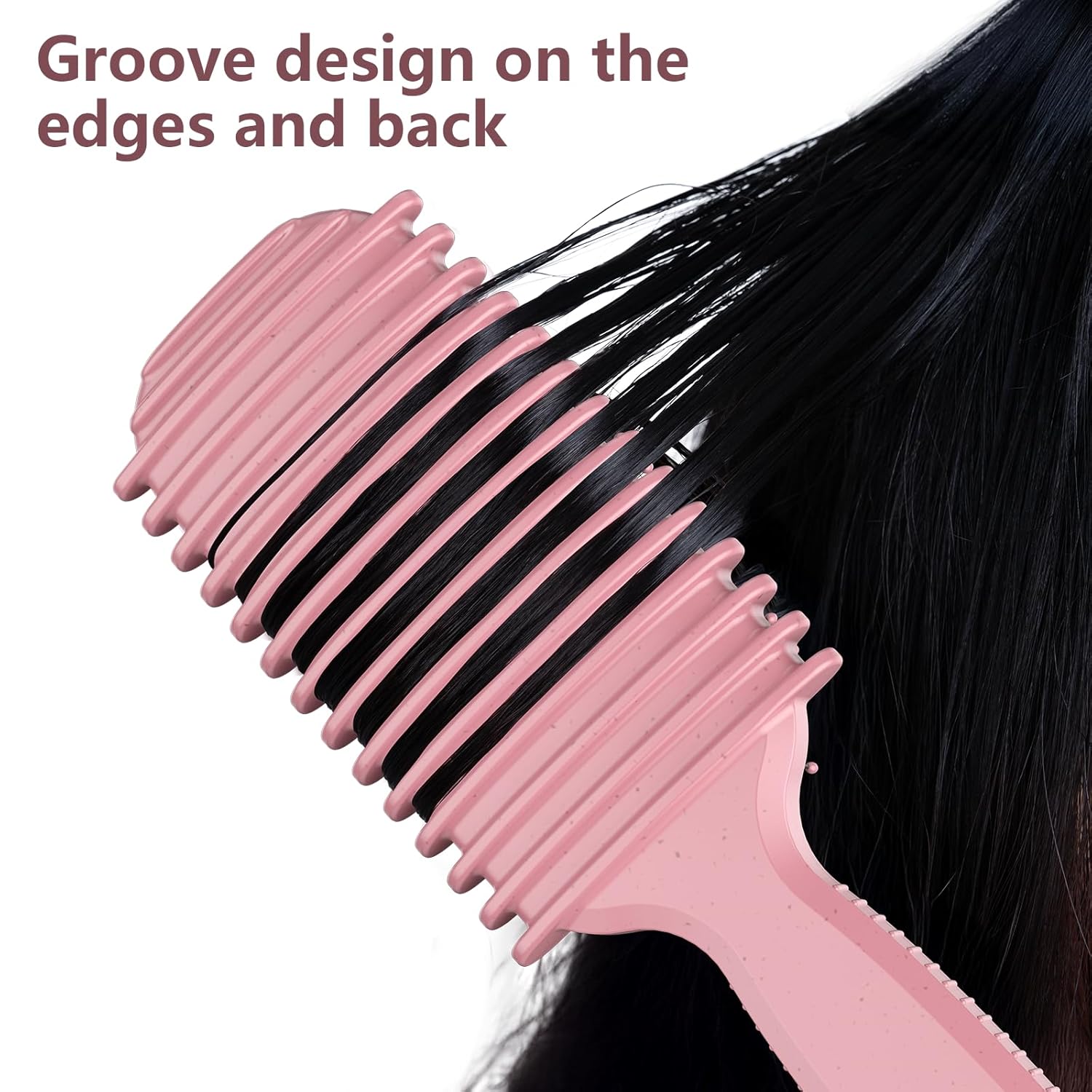
Price: $9.90 - $9.99
(as of Sep 09, 2025 03:33:09 UTC – Details)




